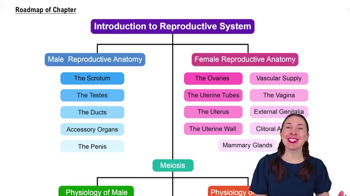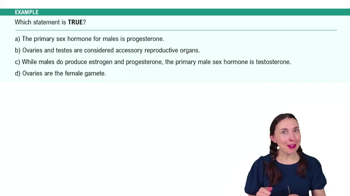Introduction to the Reproductive System definitions Flashcards
 Back
BackIntroduction to the Reproductive System definitions
1/15
Terms in this set (15)
- GonadsPrimary sex organs responsible for producing sex hormones and gametes, including testes in males and ovaries in females.
- TestesMale gonads that produce sperm and testosterone, playing a key role in male reproductive function.
- OvariesFemale gonads that produce ova, estrogen, and progesterone, essential for female reproductive health.
- GametesReproductive cells, with sperm in males and ova in females, crucial for sexual reproduction.
- SpermMale gametes produced in the testes, essential for fertilization of the female ova.
- OvaFemale gametes produced in the ovaries, capable of being fertilized by sperm.
- TestosteronePrimary male sex hormone, crucial for male reproductive organ function and secondary sexual characteristics.
- EstrogenPrimary female sex hormone, important for female reproductive organ function and secondary sexual characteristics.
- ProgesteroneFemale sex hormone involved in the menstrual cycle and pregnancy, produced in the ovaries.
- Accessory reproductive organsStructures like ducts, glands, and external genitalia that support reproductive functions in both sexes.
- MeiosisCell division process that produces gametes with half the genetic material, essential for sexual reproduction.
- CopulationPenile-vaginal intercourse, facilitating the union of male and female gametes for reproduction.
- FertilizationProcess of combining genetic material from sperm and ova, leading to the formation of a zygote.
- PubertyDevelopmental stage marking the activation and maturation of the reproductive system and secondary sexual characteristics.
- LactationProduction of milk by mammary glands, supporting infant survival post-birth.



